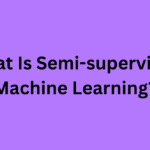Client Side Attacks- (Ethical Hacking)
Chapter 1: Introduction to Client-Side Attacks
1.1 What Are Client-Side Attacks?
1.2 Difference Between Client-Side and Server-Side Attacks
1.3 Common Vectors: Browsers, Emails, Applications
1.4 Why Client-Side Attacks Are Effective
1.5 Attack Lifecycle and Objectives
Chapter 2: Web Browsers and Client-Side Vulnerabilities
2.1 Architecture of Web Browsers
2.2 JavaScript as an Attack Vector
2.3 Browser Extensions and Their Risks
2.4 Plugin Vulnerabilities (Flash, Java, ActiveX)
2.5 User-Agent Based Targeting
Chapter 3: Social Engineering-Based Client Attacks
3.1 Phishing and Spear Phishing Techniques
3.2 Malicious Links and Attachments
3.3 Fake Login Pages and Credential Harvesting
3.4 Impersonation and Pretexting
3.5 Payload Delivery through Social Engineering
Chapter 4: Drive-by Downloads
4.1 Definition and Flow of a Drive-by Attack
4.2 Exploit Kits: Angler, Neutrino, Blackhole (Historical)
4.3 Browser Exploits in Action
4.4 Silent Malware Installation
4.5 Detection and Prevention Techniques
Chapter 5: Cross-Site Scripting (XSS) in Client-Side Attacks
5.1 Reflected and Stored XSS as Attack Vectors
5.2 Keylogging and Credential Theft Using XSS
5.3 Session Hijacking via XSS
5.4 XSS in Web Messaging and DOM-based XSS
5.5 Real-world Examples and Mitigations
Chapter 6: Cross-Origin Attacks and Clickjacking
6.1 Same-Origin Policy (SOP) Overview
6.2 Cross-Origin Resource Sharing (CORS) Misconfigurations
6.3 Clickjacking: Concept and Techniques
6.4 Frame Sniffing and UI Redressing
6.5 Preventive Measures (X-Frame-Options, CSP)
Chapter 7: Malicious File Execution
7.1 File Types Used for Client-Side Attacks (PDF, DOCX, EXE)
7.2 Embedding Malicious Code in Documents
7.3 Exploiting Macros in Office Files
7.4 Payload Delivery via File Downloads
7.5 Antivirus Evasion and Sandboxing
Chapter 8: Exploiting Client-Side Software Vulnerabilities
8.1 Commonly Targeted Applications (Adobe Reader, Microsoft Office)
8.2 Buffer Overflow Basics
8.3 Shellcode Injection Techniques
8.4 Exploiting Unpatched Clients
8.5 Patch Management and Client Hardening
Chapter 9: Email-Based Client-Side Attacks
9.1 Spoofing and Fake Email Headers
9.2 Phishing Email Construction
9.3 Attachment-based Exploits (ZIP bombs, RAR malware)
9.4 Payload Delivery using Macros and Scripts
9.5 Email Gateway Protection and Filtering
Chapter 10: Malware and Remote Access Trojans (RATs)
10.1 Malware Classifications (Trojan, Worm, Spyware)
10.2 RATs and Their Use in Client Attacks
10.3 Keyloggers and Screen Capture Malware
10.4 Creating and Deploying Payloads (e.g., with MSFVenom)
10.5 Detection and Removal of Malware
Chapter 11: Tools for Client-Side Exploitation
11.1 Social Engineering Toolkit (SET)
11.2 Metasploit Framework and Browser Exploit Modules
11.3 BeEF (Browser Exploitation Framework)
11.4 Empire and Cobalt Strike (Overview)
11.5 Testing in a Safe Lab Environment (DVWA, BWA, VirtualBox)
Chapter 12: Defense Mechanisms Against Client-Side Attacks
12.1 Browser Security Features
12.2 Antivirus and Endpoint Protection
12.3 Secure User Awareness Training
12.4 Patch Management and Software Updates
12.5 Email Filtering, Sandboxing, and Isolation Techniques
Chapter 13: Labs and Mini Projects
13.1 Creating a Phishing Page Clone and Capturing Credentials
13.2 Using SET for Email Spoofing and Payload Delivery
13.3 Exploiting Browser Vulnerabilities with BeEF
13.4 Simulating a Drive-by Download Attack in a VM
13.5 Reporting a Client-Side Vulnerability and Writing Fixes






